For 14 years, a human skeleton known as 317-38-10 sat in a cardboard box stored in a metal shipping container on the rooftop of a building in Guatemala’s capital, Guatemala City. The number was a code, representing the place it had been discovered: 317 was the designation for a pine-forested mountaintop pocked with mass graves near a town called San Juan Comalapa. It was the 38th mass grave archaeologists excavated in the country, and the 10th body unearthed in that grave.
Outwardly, there was nothing particularly special about it. Like all skeletons, many of the defining physical features that made its owner unique in life—hair, skin, eyes, and other soft tissue—were all gone, leaving only the bones and the basic information they held about the individual: age, sex, cause of death.



The location where it was found offered few more clues. Site 317 had been a military base during the civil war that ravaged Guatemala from 1960 to 1996. In 2003, when forensic archaeologists dug a few feet into the ground, they found piles of bones. Whose were they? No one seemed to know—or at least no one was saying.
One possibility was the bones belonged to political prisoners taken by the military during the war. Estimates put the total number taken at 45,000. Some had been arrested on the streets in broad daylight, others had been dragged from their businesses and homes, while more still had been taken on dark roads or at military checkpoints without any witnesses.
Evidence of “los desaparecidos,” the disappeared, as they came to be known, has remained elusive, leaving their families without peace and the nation without closure on one of its darkest chapters. So when the bones began coming out of the ground, Guatemalans waited expectantly to finally learn the fates of their countrymen and women.
Was, for example, the priest Conrado de la Cruz among them? He had been one of the many clergy imprisoned for speaking out against the treatment of the working class. Or Alaíde Foppa, the acclaimed poet who went with her driver on a quick shopping trip and was never seen again? Or the baker and union activist Jorge Granados Hernández, who before he disappeared told his wife, “If one day I don't appear or they kidnap me or something happens to me, don't go looking for me, because you'll never find me.”

There’s only so much bones can say. The shape of a skull can’t convey the last thoughts it contained, and a femur doesn’t record its final steps. All that scientists could initially glean from skeleton 317-38-10 was that it belonged to an adult man who’d suffered a blow to the jaw, likely from the butt of a gun or a rock, leaving a distinctive indentation.
The bones were driven to a forensic lab in the capital, and when an initial DNA test didn’t yield a match in the lab’s genetic database, the skeleton was boxed up, labeled with the numerical code, and stored among the other anonymous skeletons. And there they stayed for 14 years.
Then one morning last June, a flatbed truck arrived at the gated office in Guatemala City and took 172 boxes of the unidentified skeletons back to that shady mountaintop. Science had been unable to restore their identities, but at least they would be buried with some dignity. Each skeleton was carefully unloaded, sealed in a concrete niche, and labeled with its case number, in lieu of a name.

Nearby, a memorial painted with tigers, spiders, and other traditional Maya spirit guides urged visitors to never forget the evil that had taken place there. Every few weeks, women looking for their loved ones would come to the mountain, burn small sticks, scatter wild white roses, and listen. Though the bones couldn’t speak, the women believed their spirits could. And if the spirits were speaking, what would they say about skeleton 317-38-10?
A disappearance
Francisco Curruchich was 12 when he met 10-year-old Maria Juana Colaj Son in the small town of Agua Caliente in the 1950s. As teenagers they got married, and each year they’d migrate to the farming villages along Guatemala’s Pacific coastline to find work. He would cut coffee and pick cotton, and she would make tortillas for the workers to take for lunch in the fields.
Hard labor didn’t wear down Francisco; it focused him. He paid attention to the impoverished conditions he and other ethnic Maya labored in, and he wondered if he could allow his children to have the same life. In his twenties, he taught himself to read and write, and then enrolled in medical school. When he graduated, at age 30, he was a certified community health promoter. Soon he was advocating for change across Guatemala’s rural villages: better education, clean drinking water, sewage systems, roads.

It was a dangerous time to have political opinions. Years earlier, in 1954, a coup had overthrown the president and a new U.S.-backed regime had been installed. A guerilla rebellion began fomenting in the countryside. In response, the Guatemalan Armed Forces—funded and trained by the U.S.—launched a counterinsurgency campaign. Throughout the 1970s, death squads targeted activists and organizers labeled as insurgents and abducted them from their homes. Sometimes their bodies would turn up with a gunshot wound or bearing signs of torture, sometimes nothing would turn up.
Then, in the 1980s, the government’s security forces began an extensive crackdown in the countryside, including “Operation Sofia,” a scorched earth campaign “to exterminate subversive elements.” They burned villages, massacred entire indigenous Maya communities, and littered the country with mass graves. Afraid of disappearing in the middle of the night, families fled into the mountains or into exile. A United Nations-sponsored commission later described these as “acts of genocide.”
One day, a group of masked men came to Francisco’s home while he was out. His 13-year-old daughter, Domitila, answered the door. “Where is he?” the men demanded. “We want to drink his blood.” The family packed up and left.
Not long after the Curruchiches resettled, in a small city called Chimaltenango, their 18-year-old son disappeared. The family heard that he’d been abducted by police officers, but they never found out why, and he never returned. Francisco blamed himself and started to drink heavily. He would stand in front of police headquarters and bellow, “I’m the one you’re looking for! Kill me!” He went to the governor’s office and demanded his son’s release.
The family again went into hiding in the mountains, but by then, Francisco had distanced himself from them. He used alcohol to numb the pain and guilt of losing his son, Domitila says. “He drank to forget.” In July of 1983, the last time he saw his family, he promised to get sober. But three days later, a rumor reached them: armed men had taken Francisco from the town’s central plaza. He had been disappeared.
Digging for the missing
Thirty-five years passed without a trace of Francisco Curruchich. In the meantime, a 1996 peace accord finally brought an end to the nearly four-decade war that saw more than 200,000 people killed and some 45,000 reported as missing. Even now, in downtown Guatemala City, the faces of the disappeared peer out from posters emblazoned with the words, “Dónde están?” Where are they?
To answer this grim question, the Guatemalan Forensic Anthropology Foundation (FAFG) was officially created one year after the war ended, funded by foreign governments and private foundations. Today, it has 83 staff and describes itself as Latin America’s largest private forensics lab specializing in extracting genetic profiles from skeletal remains. Through exhumations, forensic analysis, and DNA collection campaigns, the lab’s scientists have gradually identified nearly 3,500 of Guatemala’s disappeared. More than 1,500 others have remained in storage in its Guatemala City office for years, the bones missing a family member DNA match or too degraded to analyze.

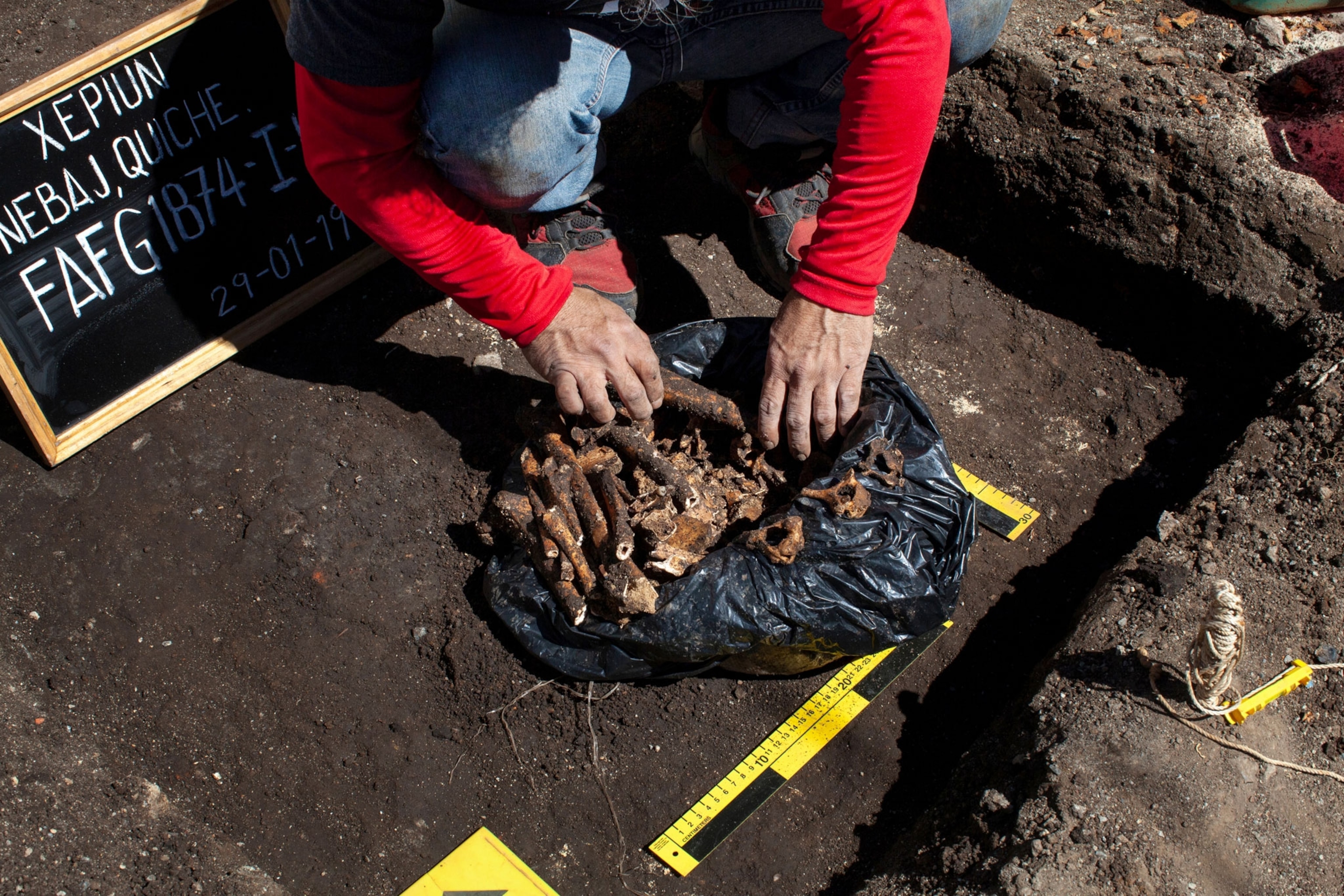
It’s been nearly 60 years since the war began, and those searching for the disappeared are getting old. Many have died without answers. The lab is racing to crack these cold cases before it’s too late to deliver them back to their families.

The director of the FAFG, Fredy Peccerelli, works out of a converted house in the capital’s historic center. Born in Guatemala during the war, he was nine when his family fled to New York. At 48, he’s bald, wears tortoiseshell glasses, and speaks fast in Brooklyn-accented English. Honorary degrees from Queens University and the University of Northern British Columbia hang in his office. On his desk is a chocolate given to him by a Bosnian-Serb war criminal. After helping exhume graves in Srebrenica, one of the most notorious killing fields of the Balkans war, Peccerelli testified during the tribunal at the Hague. During one meeting, a defendant reached into a box and pulled out a chocolate. “Here,” he said. “To sweeten you up a little.” Peccerelli shudders a bit as he recounts this. “It reminds me how 8,000 men were killed Srebrenica.”
Also on his desk is a glass-encased shrine with the hat and pipe of his mentor, the pioneering American forensic anthropologist Clyde Snow. In 1991 a petite, outspoken Maya activist named Rosalina Tuyuc, who had founded Guatemala’s first national association of war widows, heard of Snow, who was leading forensic investigations for political dissidents disappeared during Argentina’s “Dirty War” in the 1970s and ’80s. She invited him to Guatemala.


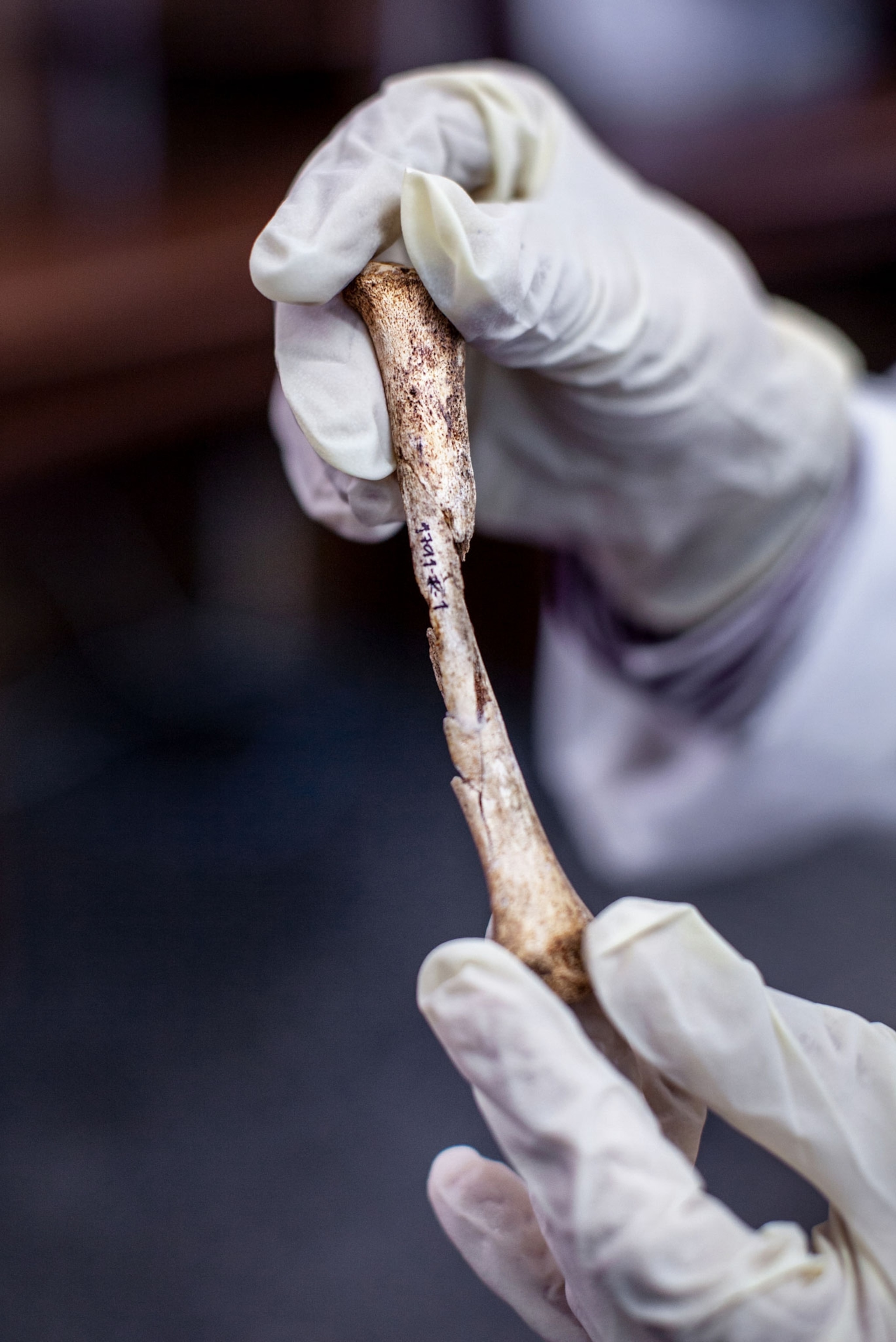
Snow, then in his sixties, arrived in 1991. He was shocked—the extent of the bloodshed was unlike anywhere he’d worked before. In Guatemala, he told a reporter, "people get killed as if they were some sort of particularly noxious agricultural pest."
Supported by human rights groups, he began identifying grave sites and training teams of young Guatemalans in forensic sciences—laying the groundwork for the lab and, he imagined, eventually trials. In 1994, Peccerelli was a senior in college studying anthropology when he heard Snow speak at a conference. Propelled by professional curiosity and his personal connection to Guatemala, Peccerelli drove from Brooklyn to Guatemala City to be part of Snow’s team.
Under Snow’s guidance, Peccerelli joined the work of exhuming mass graves across the country, digging at wartime military bases and clandestine cemeteries. One site was a former cardamom drying plant where more than 400 people had been killed. The anthropologists slept in tents inside during the excavation. “The villagers came and pointed to the corner where I was staying: ‘See that beam? They’d slam children on it,’” Peccerelli remembers them saying. “I had nightmares every night that there were pools of blood under me.”
Peccerelli meant to only stay in Guatemala for a year, but after five years he assumed leadership of the lab. Two decades later, he’s still there. His persistence is fueled in part by women like Rosalina Tuyuc, whom he calls his spiritual guide. Long before the first grave was unearthed on the mountaintop in Comalapa, she dreamed her missing father told her that he was buried there. Tuyuc pushed for exhumations at Comalapa and later bought a piece of the land and led the efforts to erect the memorial. “It’s as if the earth swallowed them,” she said of the disappeared during a visit to the site. It was a windy afternoon and she crouched near the ground to listen for spirits. “That’s the level of impunity in this country.”
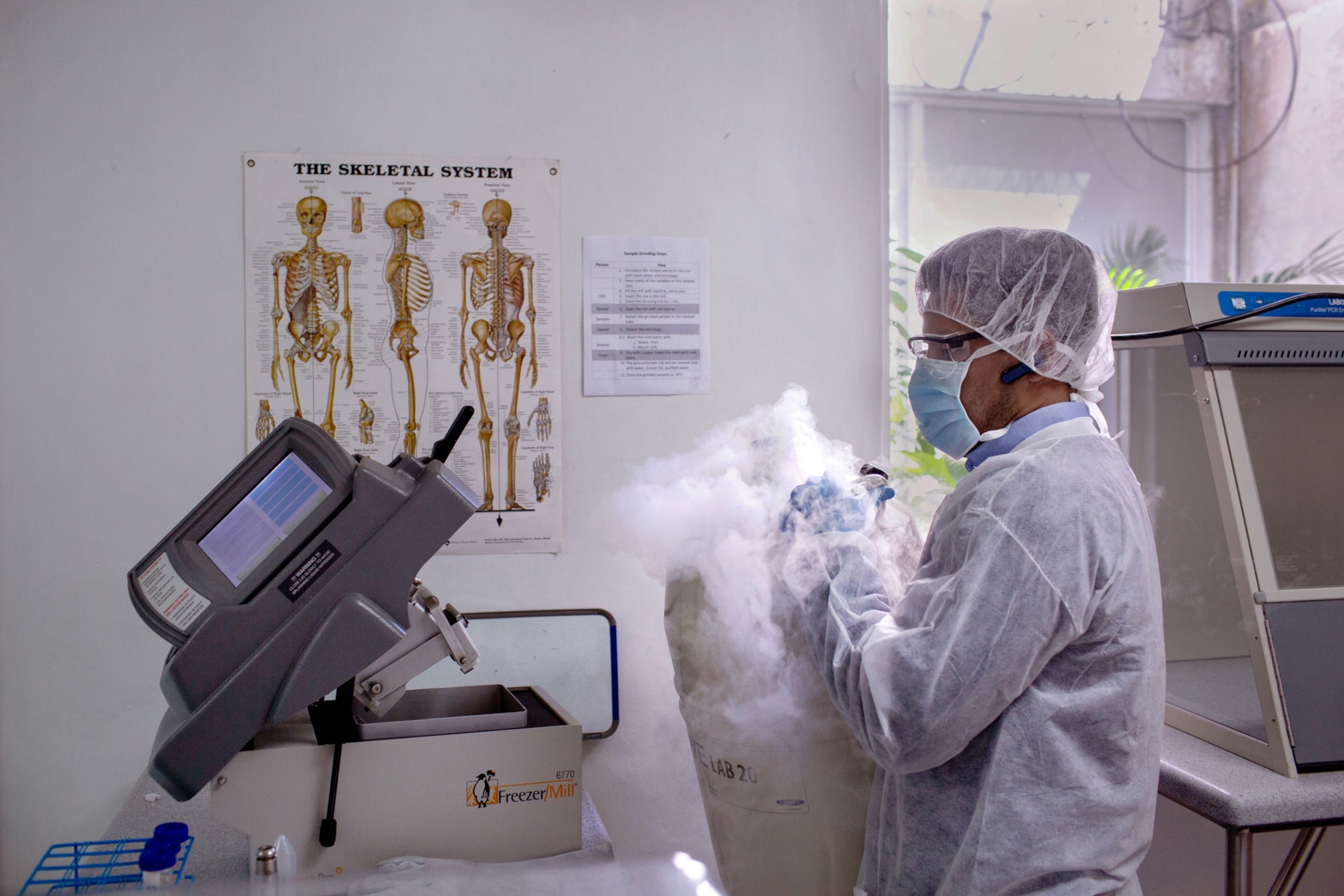
Who gets justice?
Even though the war has been over since 1996, the danger hasn’t completely subsided. In the past decade, there have been 33 convictions for wartime crimes, many of which relied heavily on evidence found by the FAFG, including a first-of-its-kind genocide case against former president Efraín Ríos Montt, who ruled during the bloodiest years of the war. The lab’s largest exhumation, of 558 bodies found in a military base known as Creompaz, resulted in the arrest of 14 wartime military officials who are now awaiting trial.
The debate over “transitional justice”—which seeks to address human rights abuses long after the commission of the crimes—is a hot topic in Latin America. In the aftermath of their own internal conflicts, countries such as El Salvador, Argentina, and Peru approved amnesty for perpetrators in order to fast-track peace agreements and get on with rebuilding. Decades later, some of those laws are now being overturned, potentially exposing those accused of war crimes to face trial.
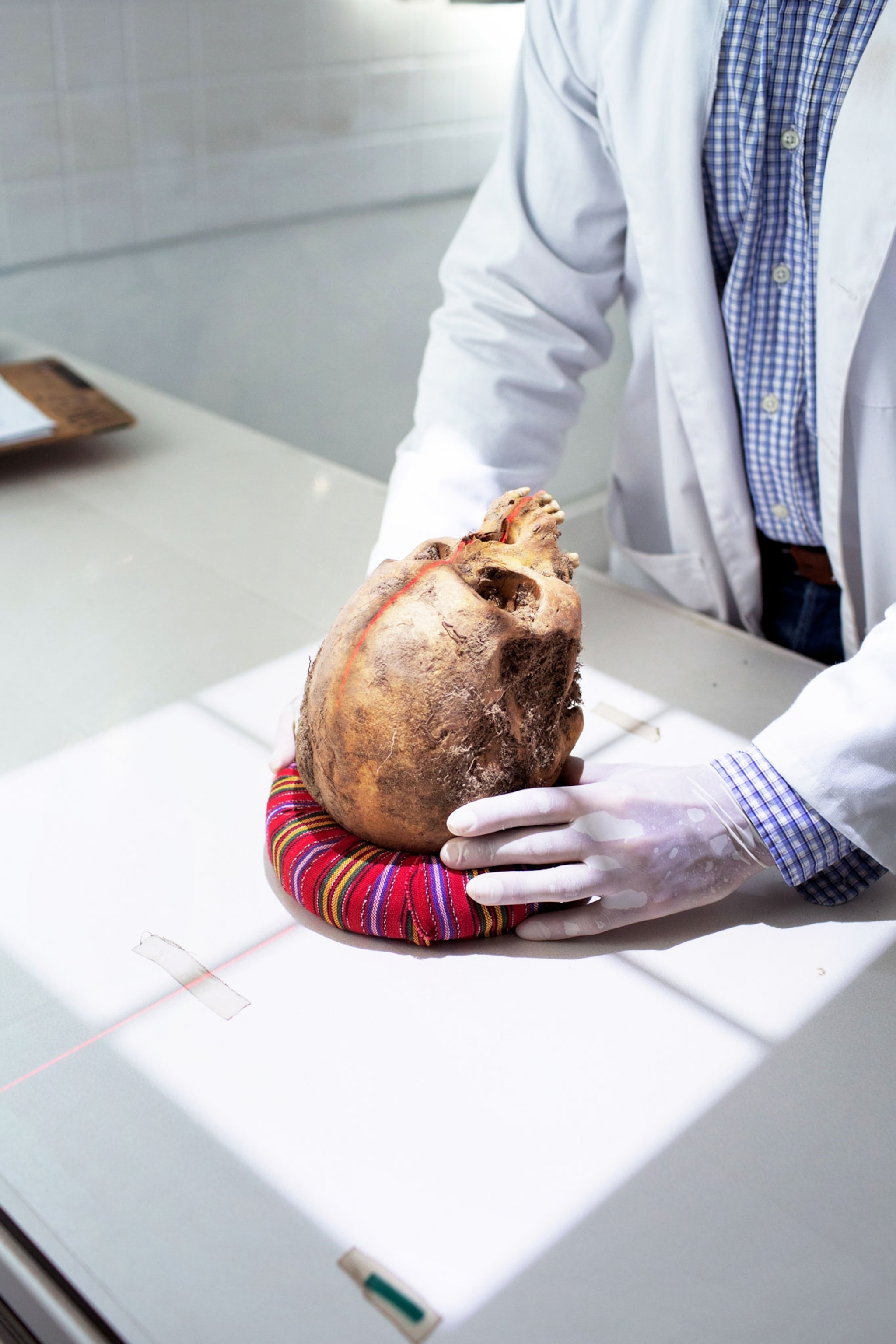
In Guatemala, the question is still widely debated: Is it better to forget and move on, or to reopen past wounds in the name of justice? Efforts to investigate and prosecute war crimes face protests by members of the wartime military, many of whom still wield power in Guatemala. The party of President Jimmy Morales, a television comedian-turned-right wing politician, was founded by retired military officers, a number of whom served in the bloodiest regions during the war. Early this year, Morales withdrew from the United Nations-backed International Commission Against Impunity in Guatemala, calling it "a threat to peace in Guatemala." Watchdogs like the International Crisis Group have pointed out that his first attempt to expel the commission, two years prior, came shortly after it charged his brother and son with fraud and investigated him for misuse of campaign funds.
Meanwhile, Guatemala continues to struggle with widespread violence. In 2018, the country reported an average of 74 murders per week. Against this backdrop, investigating war crimes that may involve powerful figures is a dangerous pursuit. Not long after Peccerelli began digging up graves, he started receiving death threats. Now, he travels with a police escort at all times, and the lab is reinforced with bulletproof doors and glass. He has sent his two children to live in the U.S.
Though there are many graves still to be exhumed and boxes of anonymous skeletons awaiting identification, the lab’s future seems uncertain. This year, a dozen members of Guatemala’s congress introduced a law that would grant amnesty to anyone who committed a crime during the war. Both international and national courts ordered the bill withdrawn, but its supporters continue to push for a vote. If it passes, more than 30 military officers currently in jail would be released.
The bill would also block all future investigations into the war, including the lab’s second-largest exhumation—Comalapa. Since 2011, the government’s Office of Human Rights has been compiling evidence to bring before a judge and request prosecution of those responsible for the bodies unearthed there.
A mountaintop of ghosts
For years, Maria Juana searched cemeteries and newly discovered graves looking for clues to the fate of her husband, Francisco Curruchich. Before long she ended up on the quiet mountaintop of Comalapa. After the war nearby farmers had told stories of freshly dug holes near their corn fields on the hillside. When a judge ordered an exhumation of the site in 2003, one farmer guided the FAFG archaeologists to a grave. In it lay five skeletons bearing the marks of knife and machete wounds. Skeletons in the second grave were dismembered. More graves were unearthed; more bones emerged marred with horrific wounds. In the 16th grave, every skeleton had been decapitated.
As forensic archaeologists dug, Maria Juana was there, alongside dozens of other women searching for their husbands, fathers, brothers, and children. Wind whipped through the trees and occasional booms echoed from an active volcano in the distance. The women peered into each new pit and often helped dig. After nearly a year of excavations, archaeologists had uncovered 53 graves that bore the remains of 220 people. But who were they?
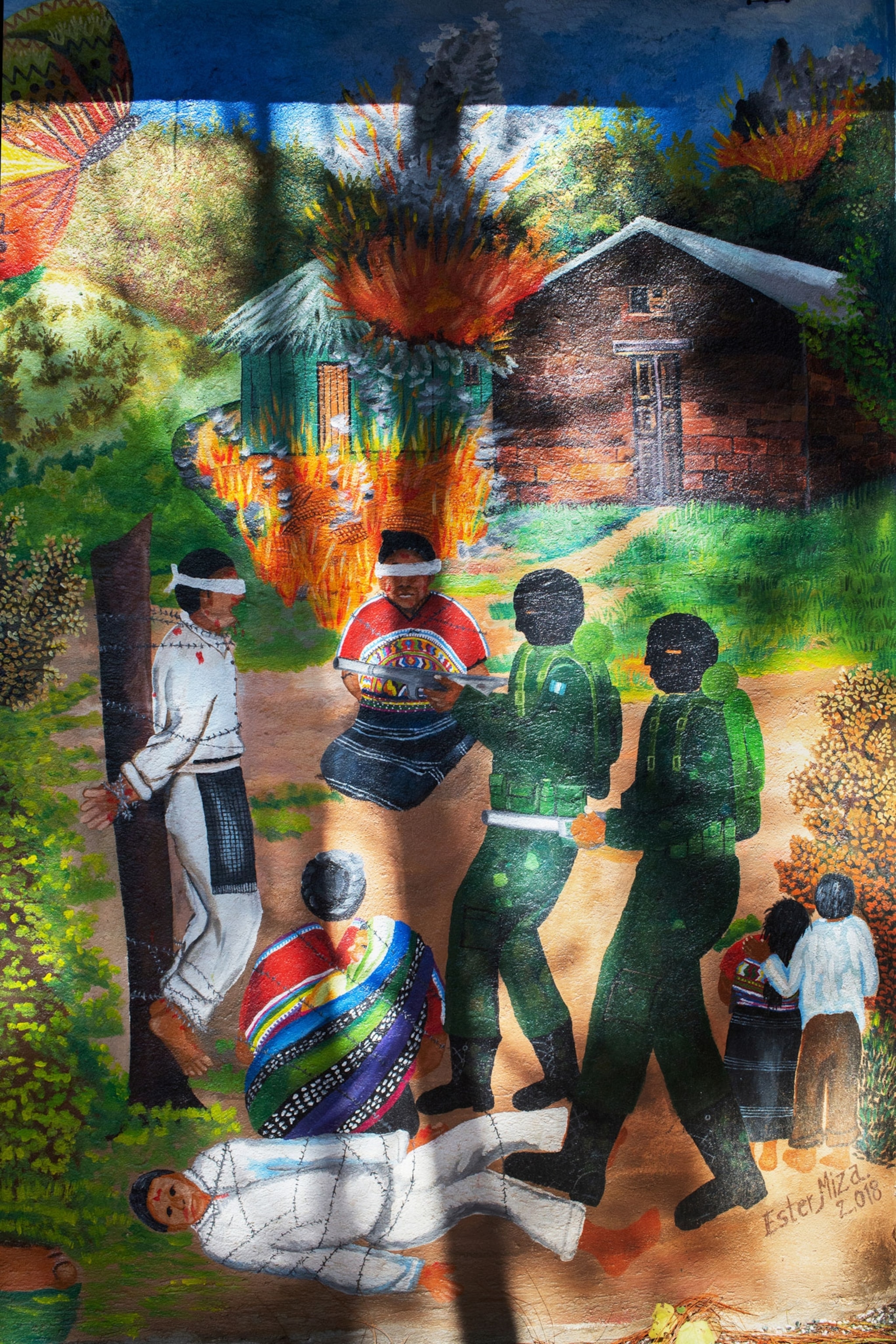


Over the last 16 years, the FAFG has tried to identify them. Since it set up its DNA lab in 2008, nearly 800 of Guatemala’s disappeared from other mass graves have been identified by matching DNA extracted from the bones with samples taken from family members. But the skeletons from Comalapa remained unknown: 172 had no matches in the database, which included samples from Francisco’s three adult daughters. For some 30 skeletons, scientists found no discernible DNA at all.
It seemed as though they had reached the end of the trail, that the earth had truly swallowed the answers. The Comalapa bones were put into paper bags, packed into cardboard boxes, and stacked in metal storage units. There they joined more than 1,500 other unidentified remains whose DNA material had been tainted or rendered unreadable by soil, animals, bugs, or burrowing plant roots.

Finally, in 2018, the lab decided to return the unidentified bones to Comalapa. Architects designed rows of burial niches and a low, curved wall engraved with the names of 6,066 people who have been reported missing to the lab. The ground was consecrated with an all-night Maya ceremony, and the anonymous skeletons were interred above where they’d been found.
Cracking the cold cases
At the end of 2018, a few months after the bones had been laid to rest in Comalapa, the lab acquired new machinery that improved the odds of finding genetic material in previously failed remains. Scientists had retained small samples from the cold cases and pulled them out of storage for retesting.
A geneticist at the lab ran a bit of bone from skeleton 317-38-10 through a new, more sensitive testing kit. The results were loaded into a computer and over the next two days, a software program compared the genetic markers to the thousands of DNA samples collected from relatives. When the comparison was completed, case 317-38-10 had a name.
A forensic investigator with the lab drove to Patzicia, a town just 30 minutes from Comalapa, walked up a narrow alley and knocked on a metal door leading to Maria Juana’s courtyard. He told her Francisco had been found.
The news spread through his nine surviving children and dozens of grandchildren. For years, the Curruchich children had wondered whether by some miracle their father could be languishing in a prison somewhere, or living outside the country. Now those possibilities were finally gone. On her way home from work that day, his daughter Domitila got a message from her brother: “I have news of dad.” She cried on the bus, but when she got home she couldn’t help but ask: “Did he show up?”
Last December, the forensic archaeologist who led the site’s excavation for FAFG, Danny Guzman, escorted the Curruchich family to grave 38 in Comalapa. They wanted to know how he died. Guzman described the blunt trauma on Francisco’s jaw but that the exact cause of death was unknown. On the mountaintop, Domitila, now 52, with jet black hair and a ruddy face, screamed.
A final goodbye
Francisco Curruchich was the first identification of the unknown bones from Comalapa, and the family had to decide whether to leave his bones in the memorial on the mountaintop or bury them elsewhere.
On a cool afternoon in February, the entire Curruchich family gathered in Maria Juana’s narrow kitchen to discuss the matter with a FAFG representative. Maria Juana, wrapped in a green woolen cardigan, observed silently from the corner behind a stove as her eight children debated whether to bring Francisco home or keep him in Comalapa. She wanted them to decide, and they easily came to a consensus. They liked that the land was already designated as a memorial and that the road leading to it was the same their father had walked along to get to medical school.
“We can go and see him there,” Domitila said. She had long wished to introduce him to her sons. One, who is a dentist, was there in the kitchen explaining DNA to his uncles. The other son announced he would add the new information to a family tree he’d made online. Education, Domitila said, is “what [my father] was screaming for and what he was silenced for.”
Two weeks later the family returned to Comalapa and returned the bones to the niche. Then they swapped out the plaque with the number 317-38-10 for one that said Francisco Curruchich.








